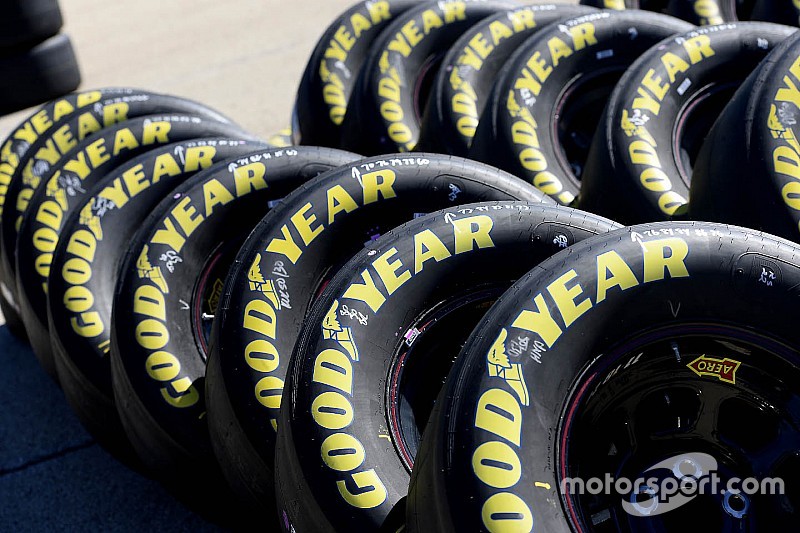Home>Sports>NASCAR>NASCAR Cars
PreviousNext
For the Daytona 500, NASCAR teams are allowed up to eight sets of tires for practice and qualifying and an additional seven sets (one set carries over from practice) for the race itself. In total, 15 sets of tires are allowed, or 60 individual tires. The number of tires used in the race will vary depending on the driver, team, track configuration, and race length, but between 20 and 28 tires are typically used for the Daytona 500 race. More aggressive drivers who take tighter or sharper turns, or lose control and spin out, will use more tires in a race.
Held at the beginning of each NASCAR season, the Daytona 500 is regarded as the most important race in the NASCAR Cup Series. Unlike other sports where the finale is the championship at the end of the season, the Daytona 500 kicks off the yearly series with a wave of excitement. The race lasts for 500 miles and is run at the Daytona International Speedway in Florida every year.
Before Goodyear became the exclusive tire supplier of NASCAR in 1997, two other manufacturers were also producing tires for the sport. The Firestone Tire and Rubber Company and the McCreary Tire and Rubber Company were Goodyear’s primary competitors in the beginning. After Goodyear rose above its early competition, its toughest battle came against Hoosier. At one point, NASCAR believed Goodyear would be the victim of a hostile takeover (affecting NASCAR’s operations) and hired Hoosier as a backup for Goodyear. After drivers raised safety concerns about Hoosier tires, Goodyear was adopted as the sole tire supplier for NASCAR.
Prior to the 2017 NASCAR season, at the Daytona 500, teams were allowed to have up to nine sets of tires on the race day.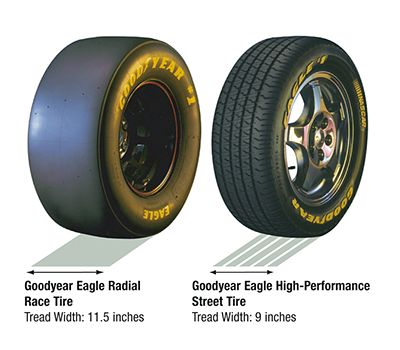 Before the season started, NASCAR announced that it would limit the number of tire sets teams could have in some of their events, including
the reduction to eight tire sets at the Daytona 500. This decrease means that crew chiefs have to manage their tires more strictly and call for fewer tire changes.
Before the season started, NASCAR announced that it would limit the number of tire sets teams could have in some of their events, including
the reduction to eight tire sets at the Daytona 500. This decrease means that crew chiefs have to manage their tires more strictly and call for fewer tire changes.
The tires used by NASCAR are designed to handle high racing speeds, and each tire can only last for about 100 miles of racing. The tires are designed to have as much grip as possible, especially when the rubber heats up to increase the traction and control for the driver. Since the tires do not last for that long, and how many tires each team can have, the cost of the tires becomes very expensive. In 2015 for the NASCAR Cup Series, $35 million was spent on tires. Each tire costs around $500, and each team goes through $20,000 worth of tires for every race.
Goodyear is the current manufacturer of NASCAR tires and offers slicks for dry conditions and rain tires for wet weather racing.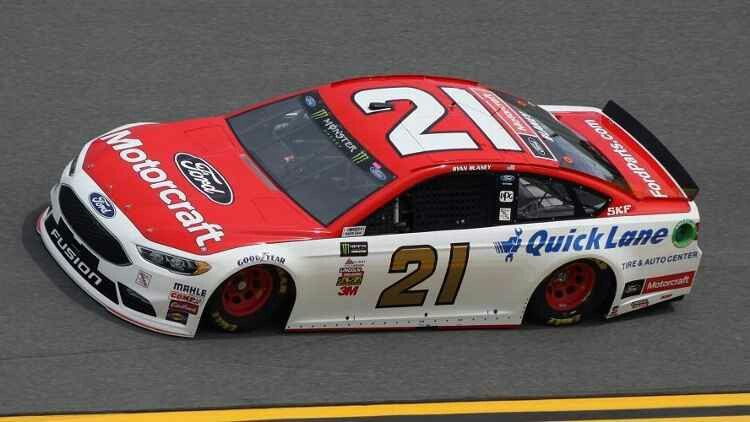
All NASCAR tires are currently manufactured by Goodyear, which is based in the United States and produces for all types of vehicles. At the Daytona 500, NASCAR Cup Series cars run 18-inch Goodyear Eagle Superspeedway Radials. The minimum recommended inflation is 28 PSI in both left tires, 52 PSI in the right front, and 50 PSI in the right rear. The circumference of the left side tires is 89.53 inches; the right sides are slightly larger at 89.76 inches around.
The number of sets of tires allowed in a NASCAR Cup Series race is different at each track. At the Daytona 500, teams are allowed to use eight sets of tires during the race. There is also a limit on the number of tires a team can use throughout the whole weekend. At the Daytona 500, teams are allowed to use 15 total sets the entire weekend; seven for practice and qualifying and eight during the race.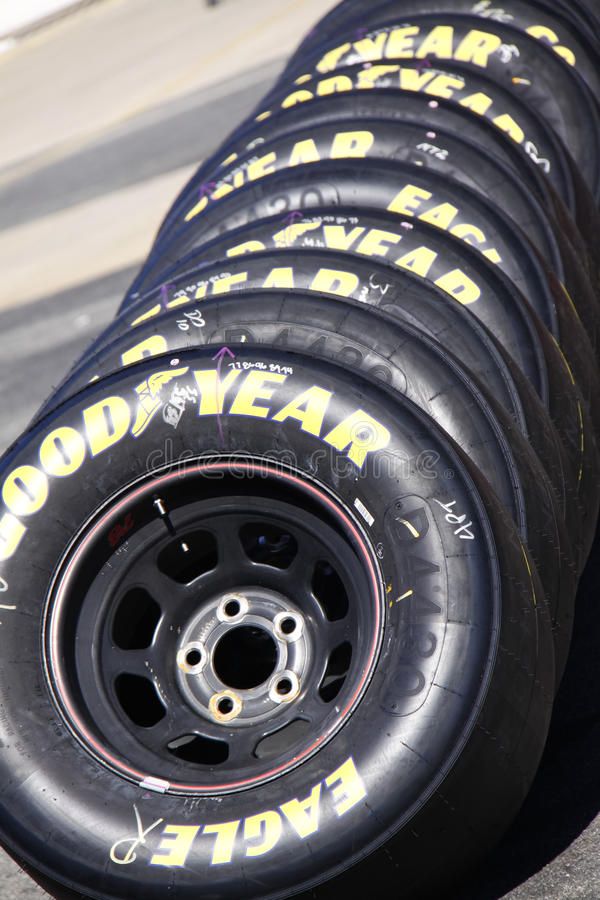
A single NASCAR Cup Series tire costs around $500, meaning that a set of four tires is $2,000. NASCAR Cup Series drivers go through up to 12 sets of tires per race, meaning that an entire race could cost a NASCAR team over $20,000 in tires.
A NASCAR Cup Series tire weighs 24 pounds. The aluminum alloy wheels used on the Generation 7 cars are extremely lightweight, at only three pounds apiece. The combined weight of rim and tire is 27 pounds per wheel.
PreviousNext
PreviousNext
In the long list of costs that are involved in running a NASCAR car and team, one of the standout figures comes from the tires.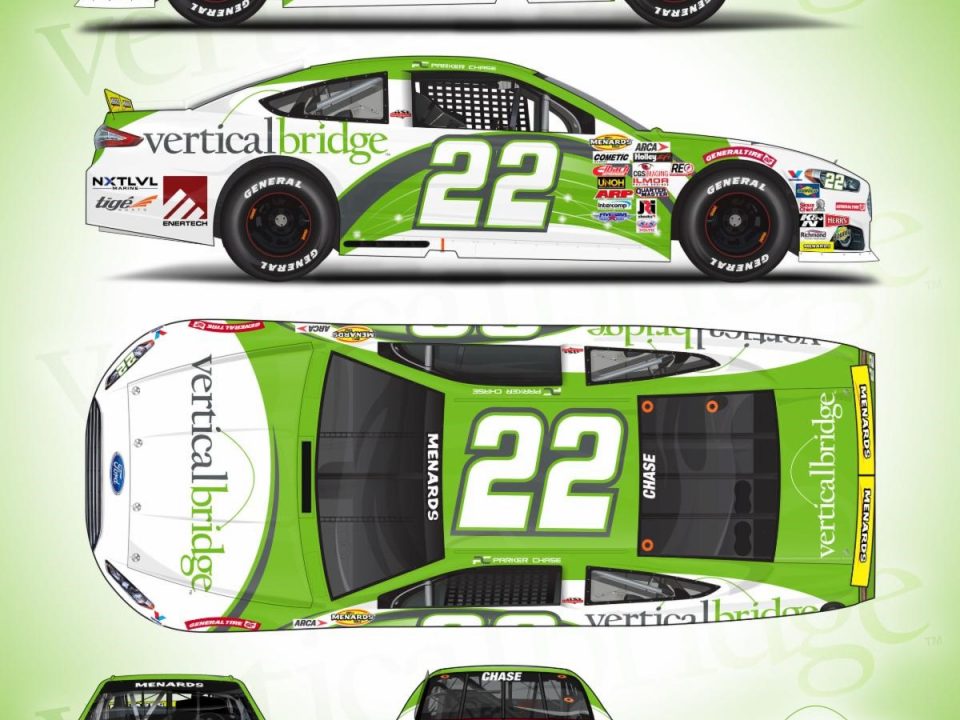 NASCAR teams all make use of the same type of tire, which is all part of the “stock car” racing experience.
The official supplier of tires right now at the time of writing is Goodyear.
NASCAR teams all make use of the same type of tire, which is all part of the “stock car” racing experience.
The official supplier of tires right now at the time of writing is Goodyear.
NASCAR tires can cost 350 to 500 dollars per tire. However, they are custom made for the tracks and cars and optimized for performance. Where the real expense comes from is the potential number of tires that could be used in a race. Up to 16 sets per team could amount to more than 25,000 dollars per race.
How much do NASCAR tires cost? Per race? Per season? The numbers might surprise you, but at any rate you’ll find it interesting just how much these round rubber contraptions cost teams, and just how many are used during the course of a race and a season. These ideas and more are what we’re exploring in this article.
It’s everything you wanted to know about NASCAR tire expense!
We mentioned above that Goodyear is the sole supplier of NASCAR tires, but why is that? Wouldn’t it be more interesting to allow a bit of market force to take place? Goodyear is no stranger to the world of NASCAR.
The two have had an association going back to 1969, but it was in 1997 that NASCAR and Goodyear signed their contract that allowed the latter to become sole supplier for the main NASCAR series. It has helped the Goodyear plant in Akron, Ohio go into overdrive, producing up to 100,000 tires per year just for NASCAR.
The tires themselves are Goodyear Eagle Radical Race tires. For the 6th-generation vehicles launched in 2022, these tires feature 18-inch bead diameter tips, as well as additional tread compounds to improve traction, and no inner liners. Before 2022, the tires had always been 15-inch models.
Each tire costs the team anywhere from $350 to $500, making a full set from $1,400 to $2,000 in total. When you remember that there could be as many as 10 pit stops during a race, sometimes even more, and teams are given up to 16 sets of tires per race, then the total budget per-race budget for tires is about $20,000.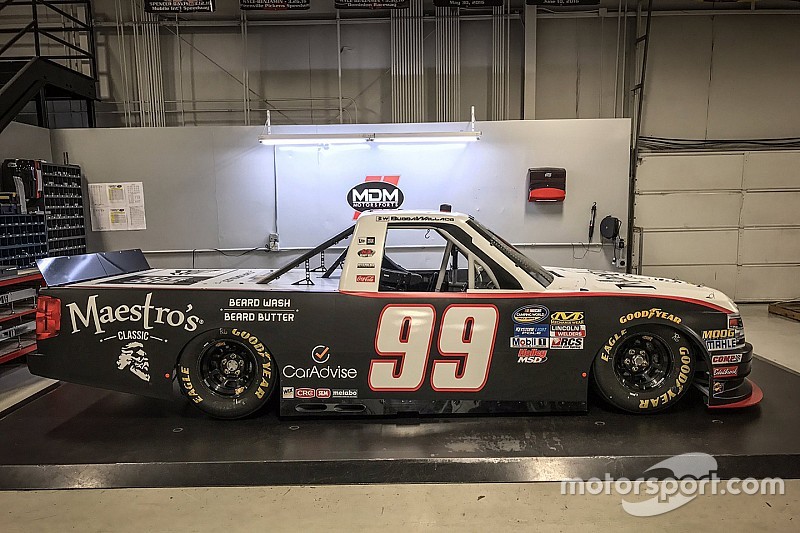
It does vary from race to race, of course, but that tends to be what it works out at on average, and that’s what the top teams budget for each race.
The per-race number for investment on tires seems excessive, but the fact is that these tires are hand-crafted in Goodyear’s Akron, Ohio plant, and are thus not in the same league as ordinary tires that are mass produced for passenger cars.
The level of engineering that goes into producing a track-friendly tire is far greater, with high speeds, sudden maneuvers and more to factor into the mix. The cost of $350-500 per tire actually doesn’t seem so high when you really think about it, but the number is simply driven higher because of the sheer number of tires that are needed to keep cars safe on the track. Each one only lasts for about 100 miles, assuming that nothing else goes wrong on the day.
Even the amount of money spent on tires for one car in a single race can be enough to make some people’s eyes water, but it’s really when you see the costs over a full season that they start to properly sink in.![]() With a budget of $20,000 per race, and 36 races in the seasons, teams need to ensure they have at least $720,000 per season, give or take some contingency money for if and when things go wrong on race day.
With a budget of $20,000 per race, and 36 races in the seasons, teams need to ensure they have at least $720,000 per season, give or take some contingency money for if and when things go wrong on race day.
Each team is allowed up to 16 sets of tires per race, not all of which may be used, but those tires still come into the teams budgets if they’re used in the lineup. Let’s say a team uses its full allotment over the course of a 36-race season, that comes to a total of 64 tires per race, or 2,304 tires for the season. Now take that number and multiply it across all the different teams and drivers, and you end up with about 100,000 tires per year.
One word has been interestingly absent from our tire story so far, and that’s “buy” or any of its synonyms such as purchase or procure. This is because technically the NASCAR teams are not buying their tires from Goodyear at all, but rather leasing them.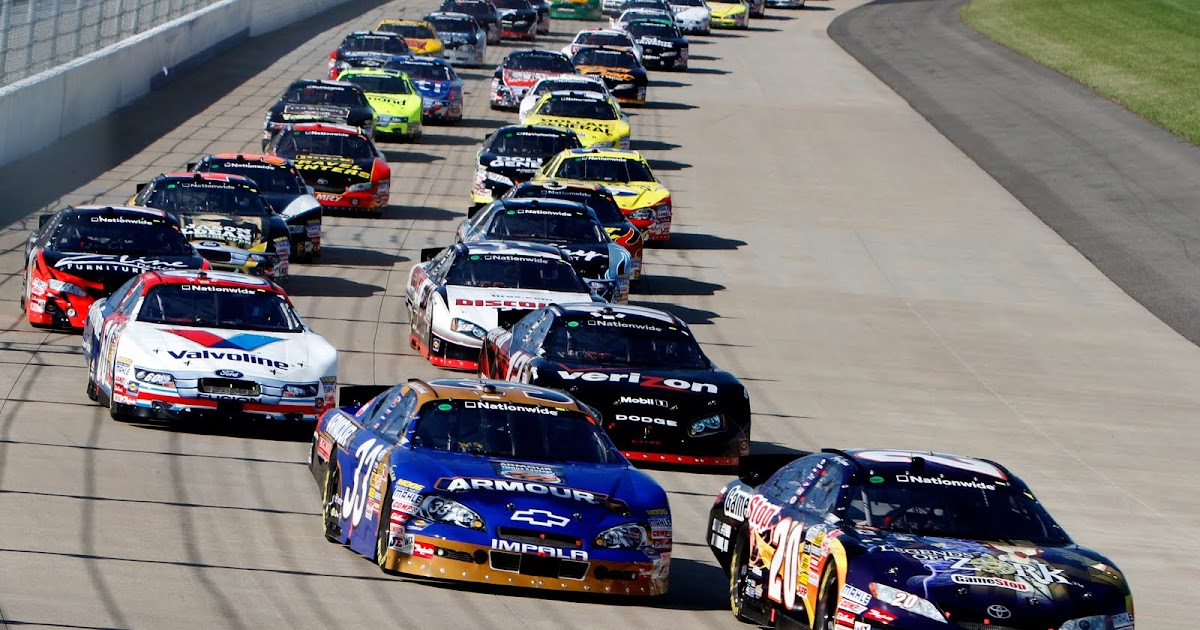
The money NASCAR is investing into tires therefore is purely on the use of the tires and not on any other aspect, all of which have to be handled by Goodyear. Some teams do get their Goodyear tires from other third-party suppliers, but this is not the standard or typical arrangement.
The total per-race cost of a NASCAR vehicle is up to $400,000 at the top end of the series. We’ve mentioned that the tires cover about $20,000 of that cost, but that clearly only forms a small portion of the overall costs. Below is a rundown of some other important costs involved in running a NASCAR vehicle and team each race:
Looking at these things, tires are neither the smallest nor the largest expense, but no one can disagree that investing in the right number of tires is a calculation that no team can afford to get wrong.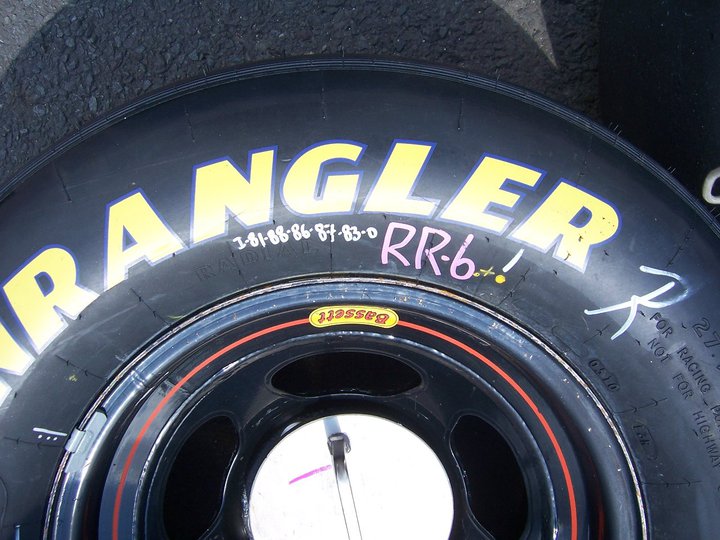
any more facts and information articles on NASCAR (and other) tires on the site. you can check out a few below.
The cost of NASCAR tires alone makes the eyes water, but as we highlighted above these are no ordinary tires. These are custom made for the car, the drivers and even the track being raced at that week. At 400 dollars a pop expensive as it is it becomes understandable for custom made tires.
The only issue is travelling at 200 Miles an Hour puts some pressure on those tires and they have to be changed at lot, that’s where the real cost mounts up, not just tin the cost per tire but the amount that can be used in a race!
References
After watching NASCAR races, at some point you must have dreamed of getting behind those lightning wheels and being a race car driver, or at least dreaming of owning a race car someday. It's not easy, other than being a good racer with great driving skills, money is a big deal in NASCAR racing, you need to have a good sponsor to spend big money on a racing team. The cost of a NASCAR race car depends on its layout.
The design of a car used in NASCAR championships is called a Generation 6 or Gen-6 car. They were introduced in 2013 to replace the Car of Tomorrow or CoT model as the predecessor had various safety issues. Gen-6 model vehicles will be replaced by NextGen model vehicles in 2022.
These cars have special aerodynamic and downforce systems to enhance their racing performance as well as safety measures.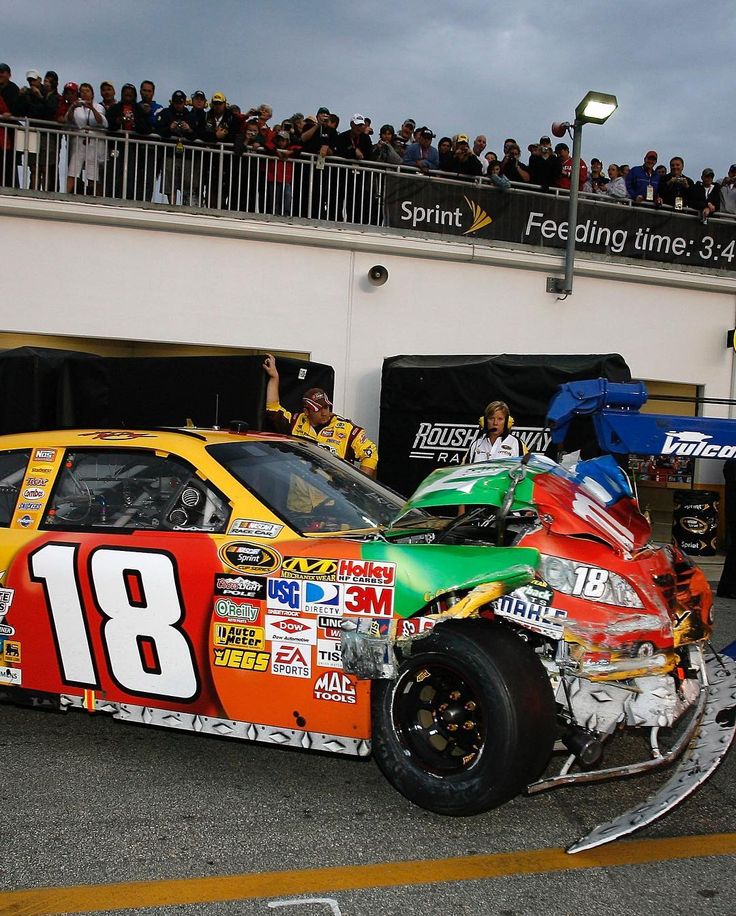 NASCAR has become a primetime sport, and it has costs to match. Most of these huge budgets are spent on building, refurbishing and upgrading the entire racing car fleet.
NASCAR has become a primetime sport, and it has costs to match. Most of these huge budgets are spent on building, refurbishing and upgrading the entire racing car fleet.
Most NASCAR championship and Daytona 500 teams keep 10 to 15 cars in racing conditions as a reserve. Some races, such as the Daytona, are more expensive as teams choose to use two engines, one for the 150 mile qualifying race and the other for the Daytona 500. costs depend on the budget of the respective racing teams and sponsors.
Car manufacturers used in NASCAR Rounds:
The cost of one engine used in the NASCAR Racer $40,000 and additional upgrades will add approximately $40,000.
Related Posts
Official NASCAR regulations limit engine size to 358 cubic inches (5,867 cubic centimeters), limiting the amount of power a car can produce, and because of this, top speed limits for racing cars made by Dodge have been lifted .![]()
At super speedways like Daytona International Speedway and Talladega Superspeedway, these top-tier stock NASCAR-specific cars not only hit 200 mph (322 km/h), they also deliver 860-900 horsepower output. With. from their V8 engines.
Toyota Racing Development, Earnhardt Childress Racing and Hendrick Motorsports are NASCAR's main suppliers of racing engines.
NASCAR racing tires are very different from standard street tires, they don't have tread to help them grip flat track surfaces much faster, and NASCAR tires are wider than regular tires, about 11 inches (28 centimeters) across.
Tire is $350 to $450 each, this set of four tires will cost around $2000 which means $20,000 just for tires for one race. NASCAR teams primarily lease their tires from the Goodyear Tire Company, which is the official supplier of NASCAR.
Major parts and components such as brakes and rotors cost between $20,000 and $40,000 to $70,000 and 120,000.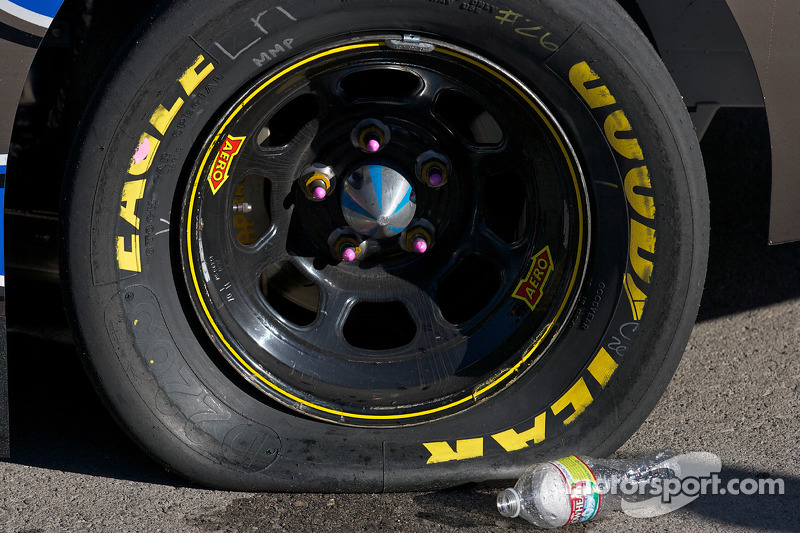 A new base car or chassis for customization and upgrades will cost at least $10,000-$0,000. The areas where NASCAR cars save money are in the speedometer, fuel gauge, brake lights, or headlights and doors, these race cars don't use any of those.
A new base car or chassis for customization and upgrades will cost at least $10,000-$0,000. The areas where NASCAR cars save money are in the speedometer, fuel gauge, brake lights, or headlights and doors, these race cars don't use any of those.
Any damage to major components such as suspension parts, driveshafts, cooling systems, bearings, axles, gears of a car can cost tens of thousands of dollars from about $30,000 to $50,000.
When the vehicle is moving at 200 mph, any slight contact with other race cars or roadsides can result in severe impact to the vehicle's bodywork, and sometimes malfunction of internal systems. NASCAR teams sign up for accident insurance because the car alone will cost them $400,000.
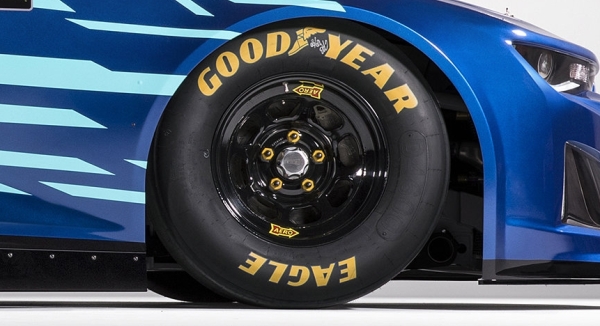 But Vitaly Petrov did not have a chance to go karting, which he now sincerely regrets ...
But Vitaly Petrov did not have a chance to go karting, which he now sincerely regrets ...
Click to download the audio player
The first and necessary step in the career of a circuit racer is racing in karting. The Russian riders are convinced of this as well. Mikhail Alyoshin chose the traditional path and spent 6 years in karting, and since 2000 he has competed in European races. But Vitaly Petrov did not have a chance to go karting, which he now sincerely regrets.
Depending on the racing class and manufacturer, the cost of the kart may exceed 3000 euros, in addition, you need to have three spare engines (1200-1500 euros). Add here such 'consumable' material as tires (the cost of the kit is around 200 euros).
Spare parts and fuel are out of the question, as everything will depend on the number of races and tests.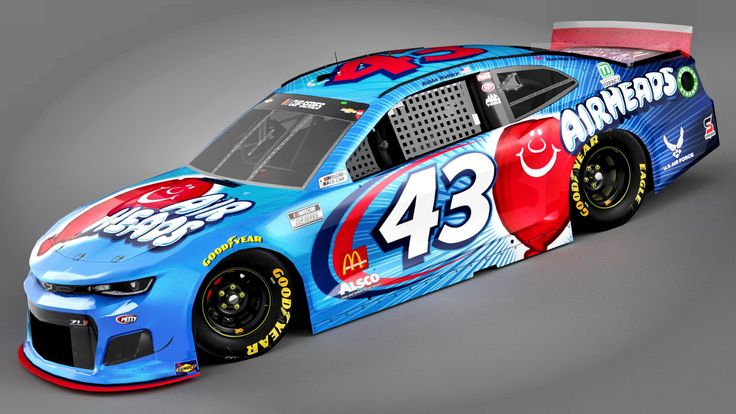 By the way, tests are a very serious expense item. But this is far from the most serious part of the estimate.
By the way, tests are a very serious expense item. But this is far from the most serious part of the estimate.
As for the season of performances, its cost directly depends on the level of competition, and can range from 15 thousand to 90 thousand euros. If we estimate the costs of six seasons of performances in European races of various levels, then the amount of expenses for the competition may well exceed 200 thousand euros.
If a driver is really moving in the direction of Formula 1 racing, then he needs to build a sports career in Europe.
The whole reason is that you need to be able to drive on real fast race tracks, which, alas, are not yet available in Russia, and secondly, knowledge of those tracks will come in handy later in the further advancement to the racing Olympus.
To acquire the necessary skills, you should change the kart to another racing car, preferably of the Formula class.
Formula Ford may well become such a car. Although the machine looks unprepossessing, it is a real racing car. It is quite suitable for gaining experience, and it will require less money than other similar Formula cars.
Although the machine looks unprepossessing, it is a real racing car. It is quite suitable for gaining experience, and it will require less money than other similar Formula cars.
It is also worth mentioning here that the costs will directly depend on the team in which you will play - at a minimum, you can meet 120-130 thousand euros per season, including mandatory tests.
Participation in the Formula Renault and Formula BMW teams will cost a lot. A season in the top Formula BMW team will cost 180-230 thousand euros, and in Formula Renault 2000 even more - up to 350 thousand euros. Further progress will largely depend on the choice of the team.
However, not all athletes find it useful to participate in such teams. Racer Vitaly Petrov considers those incomplete two seasons spent in Formula Renault 2000 simply lost, and if you rewind time, he would choose Formula 3.
Formula 3 and GP2 series races bring the driver closer to Formula 1 itself. can not be called amateur races. Here the scenario is special: the owners of the breeding teams themselves choose the pilots in whom they invest money in the hope of receiving dividends after their pets are in demand in more serious motorsport disciplines.
Here the scenario is special: the owners of the breeding teams themselves choose the pilots in whom they invest money in the hope of receiving dividends after their pets are in demand in more serious motorsport disciplines.
The starting price of the season in an average team starts somewhere around 400 thousand euros, and the upper limit is difficult to determine. Call the amounts reaching up to 600 thousand euros. Everything again depends on the level of the team, the desire of the pilot to conduct tests in the winter and other features of the contracts.
True, most team owners try to attract sponsors for specific pilots, which reduces the financial burden that the riders themselves bear. As a rule, a racing team is an ordinary business project, and philanthropy is not welcome here. Yes, it is impossible, since the profit of most teams does not much exceed the cost.
The beauty of GP2 series races is that they take place on the same tracks as the Formula 1 races. Thus, drivers who have stepped into the penultimate stage of the racing Olympus have the opportunity not only to see the master class performed by the best pilots planets, but also to light up in front of the managers of the royal races.
Thus, drivers who have stepped into the penultimate stage of the racing Olympus have the opportunity not only to see the master class performed by the best pilots planets, but also to light up in front of the managers of the royal races.
Suffice it to say that the world champion in Formula 1 Lewis Hamilton is a native of GP2 races, and a number of teams are represented here by their young promising cadres. But in this series, the participation of sponsors in the fate of future stars is not so great. So the ‘last fight’ requires even more serious funding from the rider. The average price of participation in this project is about 2 million euros, and the maximum price exceeds 3 million
Strategically, the path to the royal races looks quite simple: you need to have money, talent and just go the right way. Most of the current Formula 1 pilots have followed the beaten path, and it is unlikely that something else can be imagined here now.
At the same time, this scheme is very primitive, and it does not take into account such important components as the candidate's diligence, proper management, and the like.